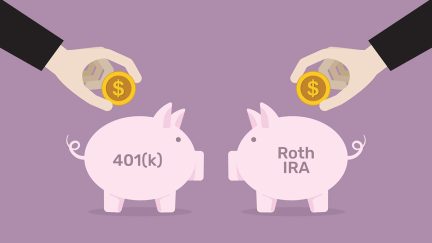For more stories like this, sign up for the PLANADVISERdash daily newsletter.
Roth Option Viewed as Another Avenue for Diversification
For retirement plan advisers and sponsors that have not considered offering a Roth option for a 401(k) or 403(b) plan, a recent finding from the Plan Sponsor Council of America (PSCA) should give them pause. In 2016, 63.1% of plans offered a Roth, more than double the 30.3% of plans that did so in 2007.
Experts say that Roth options represent another way that participants can diversify their savings, in this case via taxes. They also say that they make the most sense for younger workers who are in lower tax brackets. Paying taxes today before putting their savings into a retirement account so that they can then withdraw the savings tax-free in retirement is a powerful way to “turbo charge” savings, says Gregg Levinson, senior retirement consultant with Willis Towers Watson in Philadelphia.
“In the retirement industry, we focus greatly on the diversification of investments in a participant’s account,” says John Geli, president of retirement solutions at DST in New York. “Such diversification allows a participant to weather the ups and downs of the market. Similarly, diversifying the tax impact of your qualified plan account allows an individual to be prepared regardless of what their personal tax situation ends up being upon retirement.”
Many workers are aware of the Roth option, says Gary Weir, vice president, retirement solutions at Frenkel Benefits, an EPIC Company, based in New York. “The few times an employer has started a new plan and not offered a Roth contribution, one of the first questions we get from employees is if they can contribute on a Roth basis,” Weir says. “Qualified retirement plans often add Roth provisions to increase the flexibility and attractiveness of the plan to all workers and to appeal to younger workers or those in a lower tax bracket, for whom the prospect of long-term tax-free gains are more attractive than current tax savings.”
Amy Oullette, head of operations at Betterment for Business in New York, agrees that the Roth option may make the most sense for younger workers, who have a longer period of time to amass earnings on their savings.
Conversely, “if a participant expects that Social Security will be their primary source of income in retirement, they may not derive as much benefit from a Roth account, since they may be in a very low tax bracket,” adds Steve Bogner, managing director at HighTower Treasury Partners in New York.
What sponsors need to know
Zovistoski says there are six steps/points that sponsors need to take or be aware of before offering a Roth option. First, they will need to work with their third party administrator (TPA) to update their plan document to include information about the Roth option. Second, they need to contact their payroll service to ensure they can handle both pre- and post-tax contributions.
Third, they should be aware “that eligible employees can contribute to a traditional retirement plan, a Roth retirement plan or both—but that the combined IRS [Internal Revenue Service] maximum deferral amount is applied to both accounts,” Zovistoski says.
Fourth, should a participant elect to invest in both a traditional and a Roth retirement account, the recordkeeper needs to maintain two separate files on both because they are taxed differently, he says.
Fifth, participants’ “Roth contributions are eligible for employer matches, just like traditional contributions, and like traditional contributions, the employee is immediately 100% vested,” he says.
Sixth, should the plan decide to use automatic enrollment, the default is typically a traditional retirement plan; employees would need to affirmatively elect the Roth option, he says.
In-plan Roth conversions
Few sponsors that offer a Roth option permit in-plan conversions, Weir says. Should a participant decide to convert their savings in a traditional retirement account to a Roth account, they need to be aware that they will be subject to ordinary income tax on whatever that amount is in the year in which they make the conversion, he says. Thus, if a participant has a $300,000 balance but is only earning $50,000 a year, the participant would most likely be unable to pay the taxes on that amount, and it, therefore, makes sense for “the employee to work with their tax adviser to structure their conversions in such a way that the taxable situation can be spread over several years so there is not an adverse tax consequence in any one year,” Weir says.
It is also critical for participants to realize that once they make the conversion, it cannot be reversed, adds Cindy Wilson, financial consultant director, institutional financial services at TIAA in Los Angeles. And, sponsors have the option of allowing either unmatched pre-tax deferrals or matched pre-tax deferrals to be converted, Wilson says.
Once a participant has decided to make a conversion, Zovistoski says, they should go through six steps to ensure that it is done properly. First, they should make sure that the Roth option is, indeed, available at their company. “Second, just because a company offers a Roth option does not mean they also offer in-plan Roth conversions,” he adds. “Half of the plans with Roth do not allow for in-plan conversions.”
Third, just as Weir recommended, the participant needs to be aware that they will be responsible for the taxes on any amount that they decide to convert and, therefore, it often makes the most sense to “spread out the amounts over a period of time to spread out the tax burden,” Zovistoski says.
Fourth, the participant then needs to obtain the forms to conduct the conversion from their human resources department. Fifth, “they need to look at their next quarterly statement or log onto their account online to make sure the conversion was handled properly, and, finally, they need to look for a 1099R form at the end of the year, which will tell them how much” of the money converted from their traditional retirement account is taxable.
Participants in Roth 401(k)s or 403(b)s cannot take a distribution from the account without being subject to the 10% tax on early withdrawals until five years from their first Roth contribution or reaching age 59-1/2, says Jamelle Moody, retirement plan consultant with DWC – The 401(k) Experts in Houston.
Unfortunately, Levinson says, “the challenge with Roth is that it is complicated to explain, which is why I think many people do not use it. We just did our DC [defined contribution] survey, which showed an uptick in sponsors offering the Roth option, but among those who don’t, they say it is too complicated for participants to understand. This has to change. Roth needs to be brought into the mainstream because defined benefit plans are gone, and not enough people are properly prepared for retirement. People need every tool possible,” and the Roth option is one that can really boost savings, he says.
You Might Also Like:

Recordkeepers Prepare for Next Year’s ‘Roth-Only’ Catch-Up

Roth Rollovers Expansion Bill Reintroduced in Congress

Rise in Savings, Markets Drive Fidelity Retirement Accounts to Record Highs
« Retirement Programs Must Continue to Evolve to Address Participant Needs